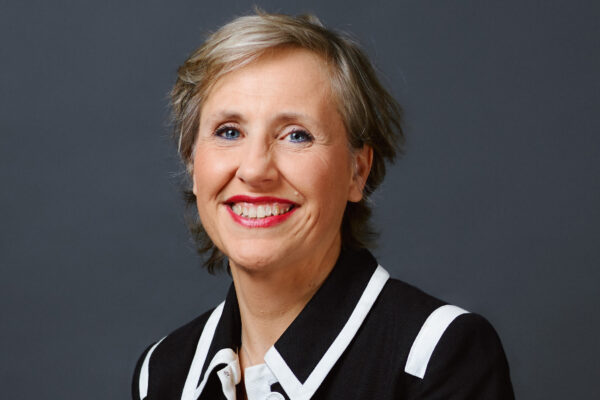Alternative assets becoming key battleground for wealth managers

With barriers to entry falling, alternative and private assets are set to become increasingly important in high net worth investors’ portfolios.
Alternative investments have traditionally been the preserve of sophisticated, institutional investors, able to lock up their capital for extended periods. In exchange for sacrificing access to liquid funds, they benefit from the more attractive returns these complex solutions offer.
But recent developments in the alternative asset class space are reducing these barriers. Portfolios belonging to wealthy families are now able to buy into high-growth investments, including previously illiquid private assets.
The emergence of ‘semi-liquid’ investment vehicles, say their promoters, is fast ‘democratising’ the private assets space, putting it on a par with the hedge funds sphere, which has long been providing greater liquidity through Ucits funds, sold across European borders and beyond.
This trend is increasingly supported by regulation, including the recent revision of the European Long-Term Investment Funds regulation (Eltif).
Commentators point to a massive opportunity. Individual investors hold 54 per cent of $289tn in global assets under management, but just 16 per cent of alternatives, including private assets, hedge funds, real estate and infrastructure, according to a 2023 analysis from consultancy firm Bain. Specifically, ultra-high net worth (UHNW) investors and family offices, with $30m plus in assets, hold 22 per cent of their wealth in alternatives. But these solutions represent less than 3 per cent of high net worth (HNW) individuals’ portfolios, with $5m to $30m in assets, and only 0.7 per cent of HNW’s portfolios with $1m to $5m in assets.
Untapped market opportunity
This vast, untapped market has become increasingly attractive to alternative asset managers, selectively offering smaller ticket sizes and setting up dedicated teams to target private banks.
Technology firms are also providing wealth managers with operational and administrative support. They are busy setting up feeder structures and bundling together capital from private banking clients, offering them access to funds with smaller minimum investments.
At the same time, demand for alternatives is increasing, both from wealthy individuals and advisers, looking for diversification options and better returns than public equity and bonds. Private markets AuM reached $11.7tn in mid-2022, with the wealth channel estimated to bring $500bn to $1.3tn into this asset class by 2025, according to McKinsey.
But there are still several hurdles private banks need to overcome if they are to deploy these solutions across all client portfolios. Alternative investments are becoming an increasingly important component of client portfolios from both a “growth and diversification perspective”, says Wells Fargo Private Bank’s head of wealth Investments Adam Taback.
But they can be “more complicated” than traditional investments to both understand and to implement. “Most clients still think of alternative investments as opaque and risky strategies, but their primary concern tends to be illiquidity,” he says.
Educating clients on the value of strategies investing directly and actively into underlying companies – carrying an “illiquidity premium” – is critical, explains Mr Taback.
Enhanced returns
These views resonate strongly with many chief investment officers (CIOs) and heads of investment at private banks. Education, for both clients and bankers, shorter lock-up periods, greater transparency from asset managers and greater choice of liquid solutions are all key growth drivers for alternatives in the wealth space, according to PWM’s ninth annual Global Asset Tracker (GAT).
Conducted between January and February 2024, the study surveyed investment and asset allocation intentions of CIOs and heads of asset allocation at 54 major private banks, managing a combined $22tn in client assets.
Three quarters of respondents believe alternatives enhance risk-adjusted returns in multi-asset portfolios, also expecting these assets to achieve greater risk-adjusted returns than bonds over the long term.
After exhibiting positive correlation with equities since 2022, because of the inflation shock, bonds can now act as portfolio diversifiers, believe 87 per cent of CIOs. But with inflation expected to remain sticky and volatile, alternatives’ low correlation with traditional assets is a sought-after characteristic. Sixty per cent point out that portfolios investing in public equities and bonds are not sufficiently diversified.
“I'm not a believer that the traditional 60/40 portfolio is the right long-term solution for clients anymore, because the economic regime has changed,” says BNP Paribas Wealth Management’s global CIO Edmund Shing. “We are not going back to the ultra-low interest rates and ultra-low inflation we had pre-2020, which means the bond stock correlation will not be as negative as it was in the twenty years to 2020,” he says.
He points to trend-following hedge funds, which can benefit from inflation volatility, also recommending exposure to energy commodities to hedge portfolios against inflation spikes, while gold is also a hedge against rising geopolitical tensions.
PWM’s panel of private bank CIOs recommend an average 12 per cent strategic allocation to alternatives in a discretionary portfolio, for a client with a balanced strategy, with numbers varying widely across the client base. Twenty-six per cent have an overweight tactical allocation to alternatives.
Yet, hedge funds and private markets remain the area in portfolios where misalignment between client allocations and chief investment officers’ recommendations is greatest. More than a third of PWM’s respondents indicate their clients have a smaller allocation to private assets and hedge funds, compared to that recommended by CIOs.
At Bank of America, the recommended allocation to alternatives ranges from 10 per cent to 40 per cent, depending on client risk profile and liquidity needs, as well as size of portfolio. In practice, across wealth management, client exposure to alternatives is “a low single digit”, says Marci McGregor, head of portfolio strategy, chief investment office, at Bank of America Wealth Management. Clients using alternatives tend to have higher allocations, but there are clients with no exposure to alternatives at all, she explains.
Reassuringly, as CIOs’ views on alternatives gradually filter down to private bankers and client portfolios, the proportion of private banks reporting a lower than recommended allocation to alternatives has gone down significantly since last year.
“It takes time to build out a fully alternatives asset allocation; you don't want to put all of your capital in one vintage year,” says Amanda Agati, CIO, managing executive, investments at PNC Financial Services Group. “The educational curve is sort of a long one,” she adds, explaining that private bank and wealth management clients “don't all have long standing exposures to alternatives and are not conditioned to investing over multiple market cycles”.
Understanding risks
Barriers to investing in alternatives also include high minimum requirements, higher fees, onerous subscription processes, cumbersome tax reporting, regulatory restrictions and manager sourcing challenges.
“There are still misconceptions and a broad misunderstanding of the merits and role of these alternative strategies in portfolios,” says Karim Cherif, head of alternatives at UBS’s chief investment office. A common misconception is to consider alternatives “as a monolithic asset class, while in fact they are a collection of strategies with different drivers, risk and return profiles,” he says. The current environment offers good opportunities to diversify returns, generate alpha, take advantage of valuation dislocations as well as position for growth over the long term, he adds.
In hedge funds, UBS primarily focuses on discretionary macro and multi-manager funds as a source of diversification. Widening dispersion between borrowers makes credit arbitrage strategies a potentially attractive addition to portfolios as well, says Mr Cherif. Within private equity, the greatest potential is found in funds with “strong track records in operational upgrades”, with the most appealing long-term structural trends lying in areas such as software, health, education, and tackling climate challenges.
Private credit and direct lending strategies are seen as a strategic source of income, diversifier of returns, and potential improver of a well-diversified portfolio's long-term risk-return characteristic.
Infrastructure, meanwhile, sits at the heart of powerful secular trends, such as decarbonisation, digitalisation and deglobalisation, and can not only help investors grow and diversify their wealth, but also add an inflation-hedging component in portfolios.
At UBS, client demand for private markets has grown more than 30 per cent per year for the last five years, albeit from a low base, as the world’s largest private bank has been increasingly pushing these assets to clients, under the leadership of CEO Iqbal Khan.
But illiquidity issues suffered by hedge funds during the financial crisis remain fresh in investors’ minds. Bankers need to be accountable for clearly explaining risks of investing in these instruments, which are often perceived as ‘black boxes’.
Risks include, but are not limited to, potential loss of capital, lower transparency, high manager dispersion, use of leverage, higher dependence on a manager’s investment skillset, potentially longer investment horizons and illiquidity, less flexibility to react to changes in investment views or to market events and higher fees, explains Mr Cherif. “Investors need to fully understand the scope of these risks before incorporating such strategies in their investment plan,” he comments.
Stars in alignment
While the penetration of alternative investments in the wealth space remains low relative to the institutional space, in recent years “stars have aligned” for wealth managers and alternative assets, says Mathieu Forcioli, global and Asia-Pacific head alternatives, investments and wealth solutions at HSBC Global Private Banking and Wealth.
“‘Open-ended’ structures are revolutionising the way private clients invest in private markets, playing an important role in democratising private market assets, giving access to a wider pool of investors at lower entry points,” says Mr Forcioli, expressing aversion to the commonly used, but misleading term, ‘semi-liquid’. Underlying investments are still private companies that cannot be sold at any time, so even semi-liquid structures cannot provide liquidity in all circumstances.
Expanding the circle of investors in private market funds, beyond sophisticated clients having “comprehensive understanding” of the structure and management requirements of closed-ended funds, has been a “persistent challenge, for private banks and wealth managers”, he acknowledges.
Open-ended funds, says Mr Forcioli, are complimentary to closed-ended funds, which tend to capture more niche themes or access lower liquidity spaces, such as venture capital. “With the advent of open-ended structures, we can now also incorporate private market products into discretionary portfolios, something not as easily achieved with close-ended funds,” he says. He reports “robust inflows” into open-ended funds, including from private clients new to this asset class.
Future battleground
Greater access to alternatives also involves significant challenges. “Democratisation of alternatives is a double-edged weapon,” believes Banca Generali’s head of segregated accounts, Corrado Cominotto. “On one hand, it allows smaller investors to broaden the set of investments at their disposal but, on the other hand, clients and bankers should be aware that these investments must be managed by the client together with a professional banker, on a periodical basis.”
As the space becomes more easily accessible, returns are expected to decline. With “oceans of capital entering it, a lot of illiquidity premium will be eroded”, points out Coutts’s CIO Fahad Kamal.
Nevertheless, there is a strong belief that developing a robust alternatives offering will be an increasingly important differentiating factor for wealth managers.
“Expertise in alternatives gives private banks a competitive advantage,” says Claire Roborel de Climens, global head of private and alternative investments at BNP Paribas Wealth Management. Private bankers who include alternatives in their product palette will “score points with clients”, enhancing customer satisfaction and improving the risk-return investment profile of portfolios.
“Bankers can also satisfy the entrepreneurial spirit of many clients with storytelling about unlisted companies,” she says, explaining that this universe represents approximately $15tn, or only 10-15 per cent of listed markets. They can also invite clients to experience roadshows with experts or asset managers, an opportunity rarely offered within traditional assets.

Private bankers, though, may be reluctant to put their clients’ money in alternatives. Not only because of lack of knowledge, heavy subscription processes and complex reporting, but also because illiquidity may prevent them from ‘churning’ assets in client portfolios, which may translate into missed transaction revenues, warn consultants and industry experts. Moreover, capital lock-ups of 10 years or more would prevent private bankers from taking their clients’ assets with them, when moving to a new employer, which is an additional disincentive.
Search for appropriate liquidity
“If the industry finds the ‘magical unicorn’ of assigning appropriate liquidity to an illiquid asset class, there is no doubt private assets will represent a much bigger part of the average private client portfolio,” predicts Coutts’s Mr Kamal. Today private assets are “very attractive in theory, but there’s lots of practical problems with employing them on a wider basis”, with the largest hurdles being large ticket sizes and illiquidity.
Capital will likely flow from clients’ traditional investments but may also come from other parts of their wealth structure, potentially increasing clients’ share of wallet for the bank, he says.
“A multi-trillion dollar asset class today, private assets are on the verge of becoming investable for most private banks, and we need to educate ourselves on them first and then educate our client base, if we are going to be putting assets into that space,” believes Mr Kamal.
While still in their evolutionary phase and with many challenges to face, it is clear alternatives and private markets will represent a major future battleground for wealth managers.





